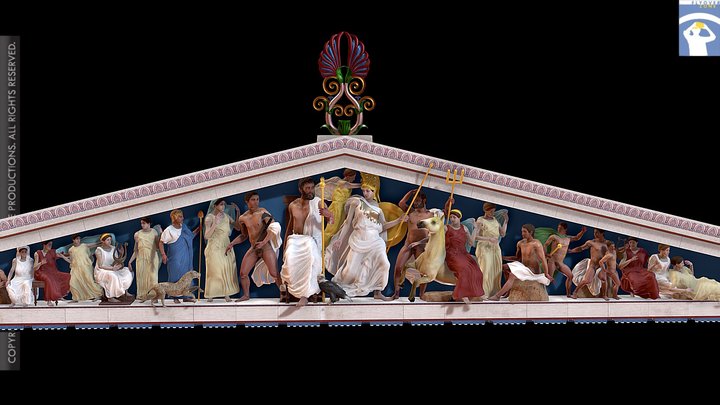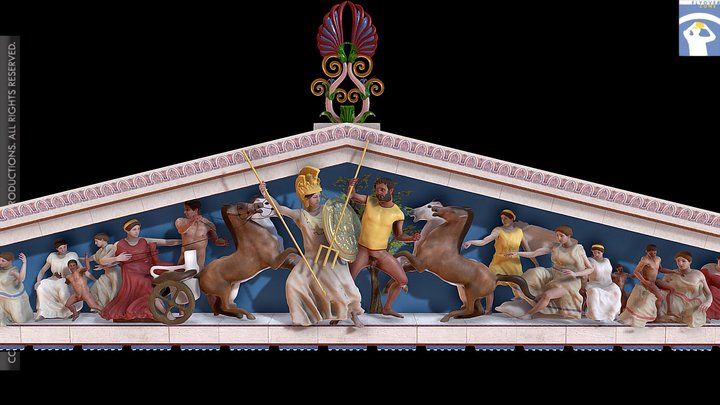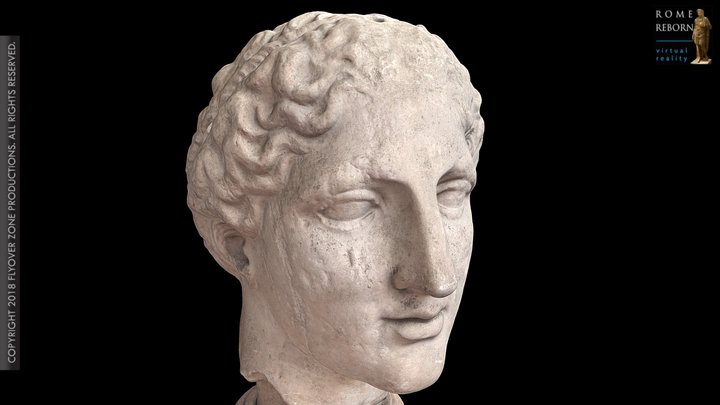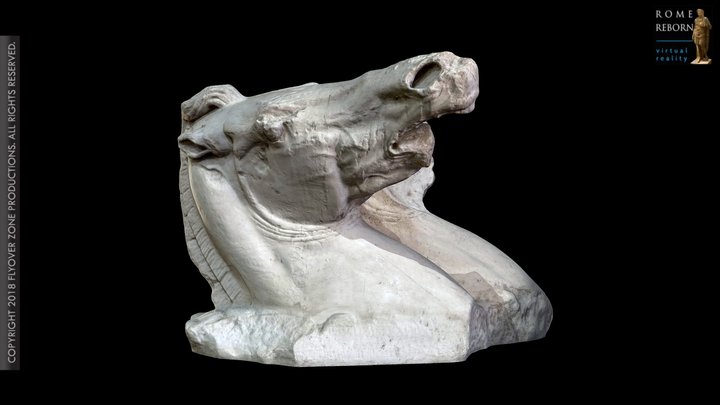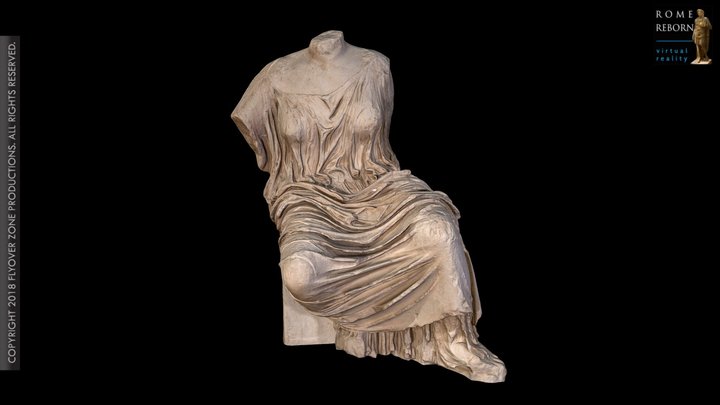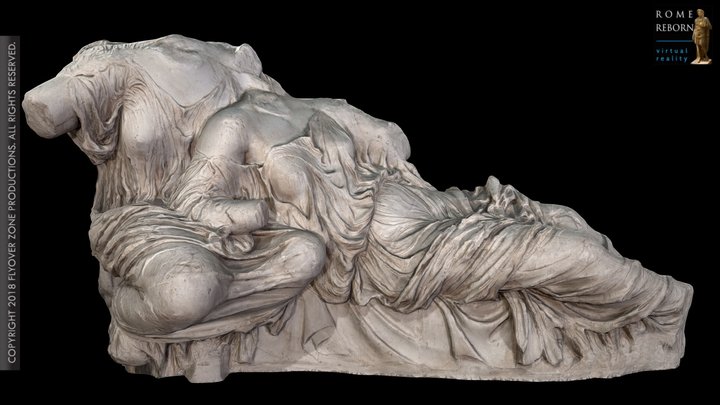Floor | Greek Art
Parthenon Pediments Gallery
The Parthenon, built between 447 and 432 BCE for the city’s patron goddess Athena, is perhaps the most famous monument of ancient Greece. It was, after the entrance gate of the Acropolis, the Propylaia, the second of the great building projects begun under the influence of Perikles. As with all public buildings, its sculptural decoration was closely linked to the historical and political situation of the city: for the Athenians, the Parthenon was to be an identity-forming symbol of their victories over the Persians, a symbol of their democracy, and an expression of their claim to the leadership of Greece. Unlike the building projects of the sixth century, it was indeed a democratic building: all important decisions on the building’s form and decoration were made in the citizen assembly. The sculptural decorations of the Parthenon are absolute masterpieces of ancient art. The metopes celebrate the victories of the Athenians and the Greeks over the Persians, transfigured as episodes from mythology. The frieze that surrounds the central cult space of the temple, the cella, depicts the citizens themselves in the procession of the Panathenaic Festival; they represent an ideal image of harmony and the much-vaunted isonomia, the political equality of all citizens, which is even observed favorably by the Olympian gods. The east pediment showed the birth of the goddess Athena from the head of Zeus, father of the gods, observed by the other Olympian gods and heroes. The west pediment depicted the contest between Athena and Poseidon, good of the sea, for the patronage of Athens and Attica.

